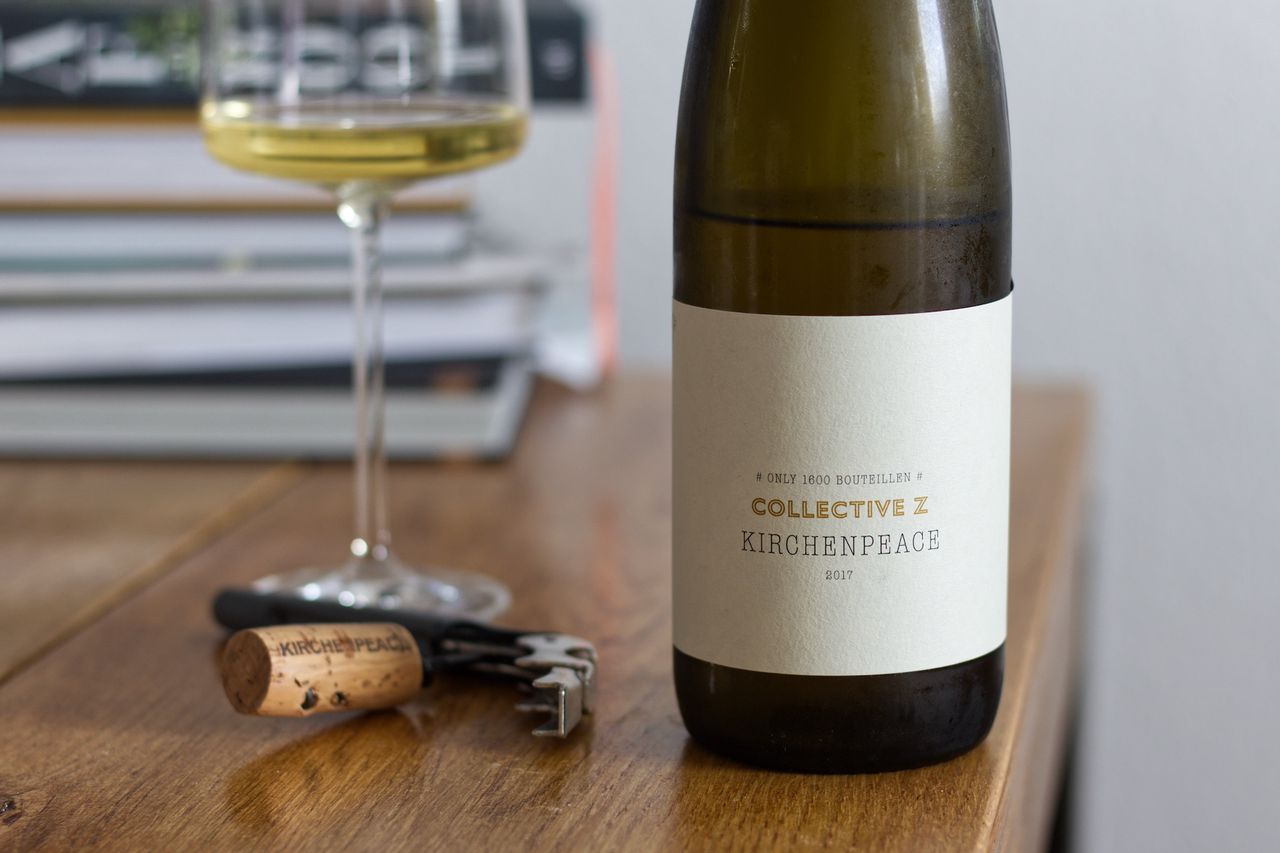Collective Z - Kirchenpeace 2017
We drink a Natural Riesling from the Palatinate: a bottle of Kirchenpeace 2017 from Collective Z.

Collective Z is a young winery from the Palatinate. The first wines were only filled and sold in 2016. It feels like yesterday. The estate’s vineyards are located around Leistadt on the edge of the Palatinate Forest. There, the vines stand higher than many other vineyards in the Palatinate, and since land consolidation never took place here, the plots are small and spread out. It is fermented spontaneously, the wines lie in the wood and sulfur is if it all only added minimally. In addition, there is a lot of manual labor and animal work. The team is assisted by seven sheep in the ecological vineyard care of the two hectares of land. The grapes for the Riesling Kirchenpeace, which we have in the glass today from the 2017 vintage, come from one of the oldest vineyards of the winery. The wine is fermented in small wooden barrels and then left on the fine lees for a long time after a short maceration period.
The wine is initially quieter than others. Cool fruit, some wet stone, lemon zest and a bit of butter behind it. On the tongue, the sensation goes more towards natural than it did on the nose. The wine is structured and more on the cool side. There’s grapefruit, elegance and a salty feeling lingers on the tip of the tongue. It is also reminiscent of crisp fresh apples.
As the evening progresses, it becomes more herbal and ethereal. Air brings a lot of change to the aroma here. There’s now lemon balm and pineapple mint coming out of the glass and the apple lingers on. I don’t think the Riesling tastes particularly like Riesling. At least not like classic Riesling. If Riesling, then the association goes more in the direction of the wines that Odinstal puts into bottles. The wine is definitely complex and incredibly layered.
The ethereal herbaceousness is something the wine retains overnight. The fruit, however, seems to have completely disappeared. Lemon balm and a bit of wood dominate. Not only has the fruit dipped, but the creaminess that was there intermittently on the first evening is gone. The wine seems rounder on the tongue, more harmonious and a bit more yellow. This goes great with the saltiness. On the second day, air again brings change. It becomes nuttier and the fruit experiences a second spring. Yellow it is now and so ripe that it seems sweet. This smells like so much, is fresh, lingers forever and keeps changing and changing. Over the course of the evening, it reminds me at times of lemonade, of marzipan, of fruit gum cherry, lilac, pineapple and then again the balm. So much to discover, so much to taste in this wine. Amazing.